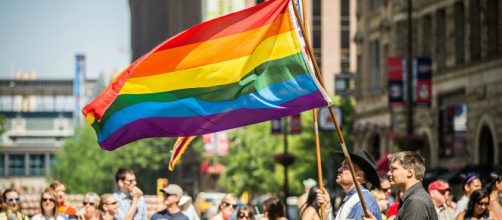Every June the LGBTQ community and its allies and advocates come together to celebrate the Pride month, waving rainbow flags, organizing marches and conducting various events to support the Queer community. But how did Pride month begin? Why is it celebrated in June? Let’s take a look at the rich history of this month.
The Stonewall riots
The origins of this month trace back to 1969 when the Stonewall Riots had begun. In the early hours of June 28, 1969, police raided a gay bar called the Stonewall Inn in the Greenwich Village section of New York City.
The police claimed that they raided the bar for serving alcohol without a liquor license, but back then, it wasn’t uncommon for law enforcement to target gay-friendly establishments like the Stonewall Inn.
“In 1969 the solicitation of homosexual relations was an illegal act in New York City (and indeed virtually all other urban centers). Gay bars were places of refuge where gay men and lesbians and other individuals who were considered sexually suspect could socialize in relative safety from public harassment. Many of those bars were, however, subject to regular police harassment,” states Britannica.com.
It was the third such raid on gay bars of the Greenwich Village section in a very short span of time. The patrons of the popular gay bar clashed with police as the employees were being arrested. But when the cops started forcing some drag queens and a lesbian into a paddy wagon, the spectators became outraged and the brawl erupted into a riot that quickly turned into an international movement for Gay And Lesbian rights.
"The queens were fighting the cops. The cops were fighting back," Henry Arango, a riot witness, told the Huffington Post in a 2015 report. "I saw police cars being put on fire. The drag queens were calling names, throwing rocks," he added.
The Stonewall Riots are considered the first major protest for LGBTQ rights, according to HISTORY.com. Post the riots, the anguish and the overwhelming support that poured in for the Queer community spurred the creation of the Gay Liberation Front and numerous other civil rights groups.
The first Pride Parade
A year later, the first Pride Parade took place on June 28th in New York to commemorate the Stonewall Riots. Pride marches were also held in other cities like Chicago, Los Angeles, and San Francisco.
“There were no floats, no music, no boys in briefs. The cops turned their backs on us to convey their disdain, but the masses of people kept carrying signs and banners, chanting and waving to surprised onlookers,” wrote Fred Sargeant of villagevoice.com in his first-person account of the 1970 parade. “Say it clear, say it loud. Gay is good, gay is proud,” chanted the crowd at the historic Pride Parade.
The credit for organising the first Pride march goes to a bisexual woman named Brenda Howard who was the driving force behind the landmark event. “You needed some kind of help organizing some type of protest or something in social justice? All you had to do was call her and she’ll just say when and where,” Larry Nelson, Howard’s partner, told The Advocate.
Other historic events that impacted the LGBTQ community
In the next few years, various other events helped in cementing the presence of the LGBTQ community. For instance, the American Psychiatric Association declassified homosexuality as a mental illness in 1973, in a bid to eradicate stigma and raise awareness to create a more inclusive society.
In 1978, Gilbert Baker of San Francisco designed the original rainbow flag that was used as an epitome of gay pride. Hand-dyed versions of Baker’s iconic flag were first used at the Gay and Lesbian Freedom Day March held in San Francisco in 1978.
According to the Library of Congress, Bill Clinton, the 42nd President of the United States, was the first president to acknowledge the Pride month in June 2000.
He said that the month recognizes “the joys and sorrows that the gay and lesbian movement has witnessed and the work that remains to be done.”
In June 2016, former U.S President Barack Obama declared the Stonewall Inn and the adjacent Christopher Park as the first national monument to honour the LGBT rights in the country.


